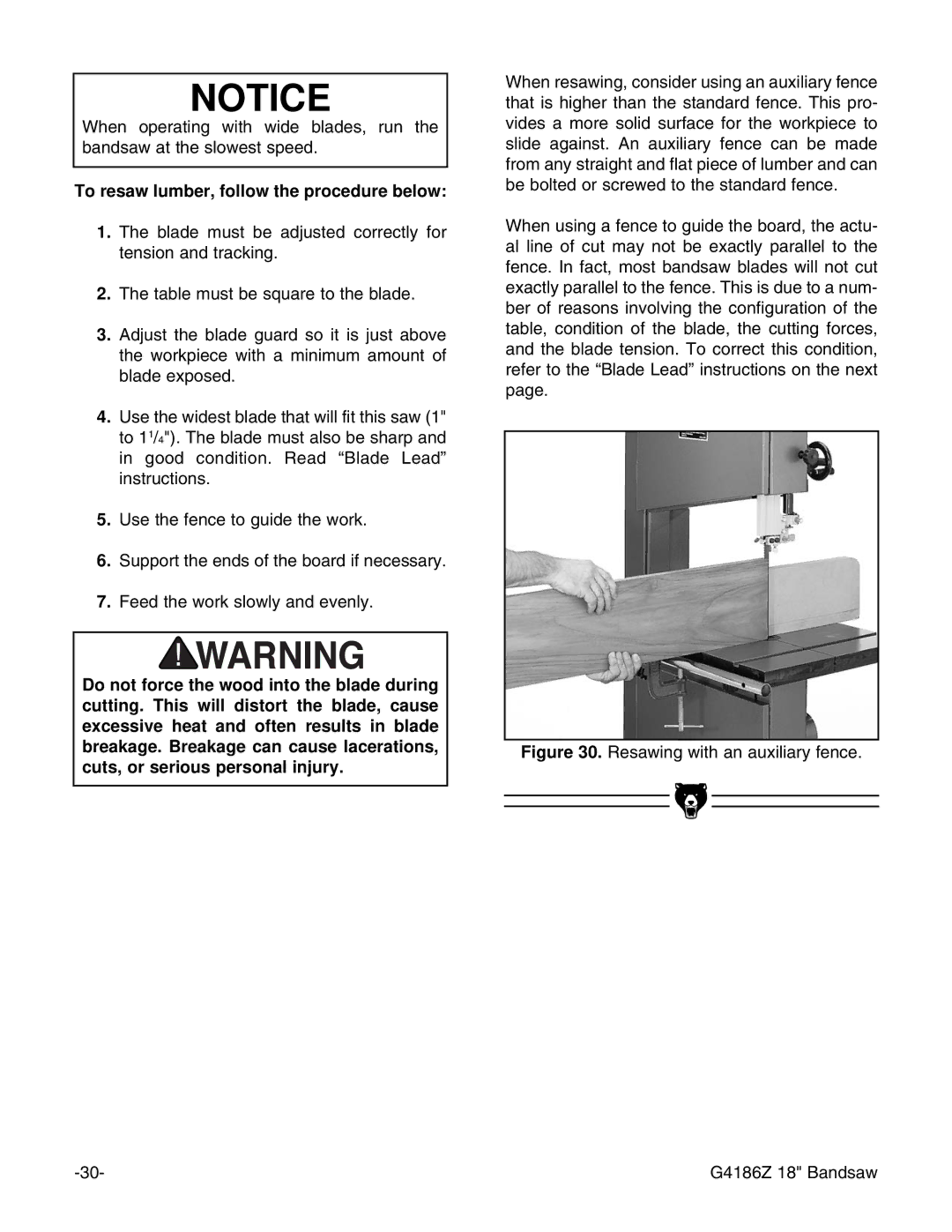
NOTICE
When operating with wide blades, run the bandsaw at the slowest speed.
To resaw lumber, follow the procedure below:
1.The blade must be adjusted correctly for tension and tracking.
2.The table must be square to the blade.
3.Adjust the blade guard so it is just above the workpiece with a minimum amount of blade exposed.
4.Use the widest blade that will fit this saw (1" to 11/4"). The blade must also be sharp and in good condition. Read ÒBlade LeadÓ instructions.
5.Use the fence to guide the work.
6.Support the ends of the board if necessary.
7.Feed the work slowly and evenly.
Do not force the wood into the blade during cutting. This will distort the blade, cause excessive heat and often results in blade breakage. Breakage can cause lacerations, cuts, or serious personal injury.
When resawing, consider using an auxiliary fence that is higher than the standard fence. This pro- vides a more solid surface for the workpiece to slide against. An auxiliary fence can be made from any straight and flat piece of lumber and can be bolted or screwed to the standard fence.
When using a fence to guide the board, the actu- al line of cut may not be exactly parallel to the fence. In fact, most bandsaw blades will not cut exactly parallel to the fence. This is due to a num- ber of reasons involving the configuration of the table, condition of the blade, the cutting forces, and the blade tension. To correct this condition, refer to the ÒBlade LeadÓ instructions on the next page.
Figure 30. Resawing with an auxiliary fence.
|
|
|
|
|
|
|
|
|
|
|
|
| G4186Z 18" Bandsaw | ||
